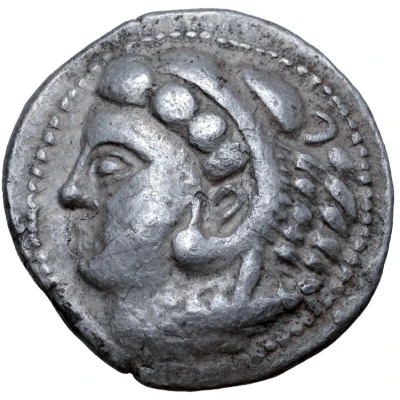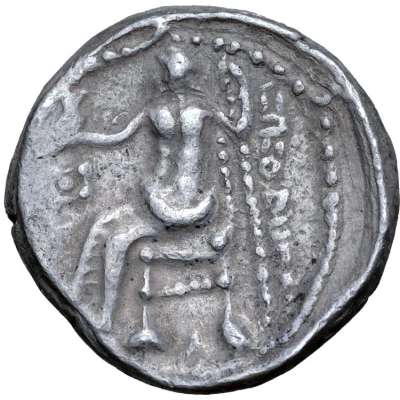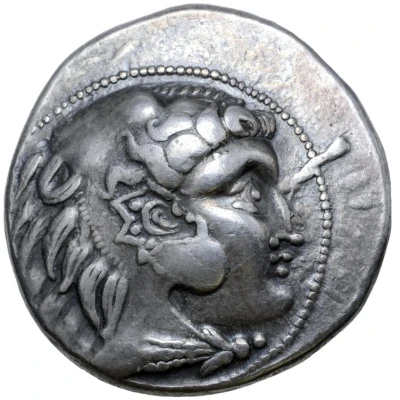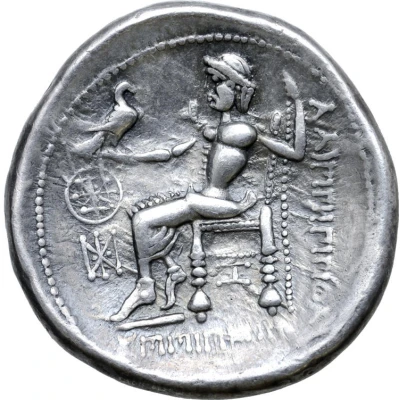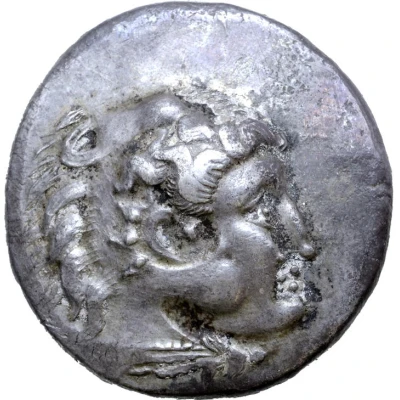
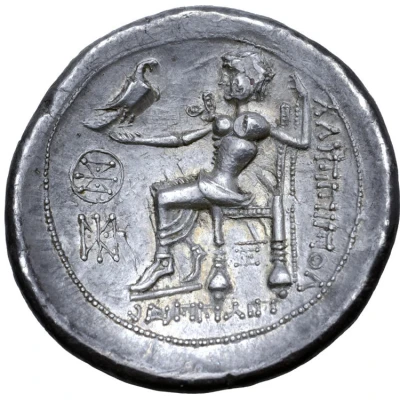

© Roma Numismatics Limited
Tetradrachm Philip III Type 300 BC - 201 BC
| Silver | 16.48 g | 28 mm |
| Issuer | Uncertain Eastern European Celts (Uncertain Central and Eastern European Celts) |
|---|---|
| Type | Standard circulation coin |
| Years | 300 BC - 201 BC |
| Value | Tetradrachm (4) |
| Currency | Drachm |
| Composition | Silver |
| Weight | 16.48 g |
| Diameter | 28 mm |
| Shape | Round (irregular) |
| Technique | Hammered |
| Orientation | Variable alignment ↺ |
| Demonetized | Yes |
| Updated | 2024-10-09 |
| Numista | N#191705 |
|---|---|
| Rarity index | 100% |
Reverse
Zeus Aëtophoros seated to left, holding sceptre; ΛΛΠΠIΠOΛ to right, VΠΠΛIΠ below, two monograms to left and letter under throne.
Lettering:
ΛΛΠΠIΠOΛ
VΠΠΛIΠ
Comment
Examples of this type:• Example #1 (16.48g, 28mm, 5h; Extremely Fine) - In main image:
◦ Ex-Hermann Lanz Collection; published in Kostial #898;
◦ Exhibited by the Staatlichen Münzsammlung München at the 1997 International Numismatic Congress in Berlin; at the Berliner Bank also in 1997; also exhibited at the Luitpoldblock Palmengarten, Munich in 2003 (exhibition #159[reverse]).
◦ Auctioned by Roma Numismatics Ltd, Auction XVIII, 29 September 2019, lot 224. Sold for 240 GBP.
Interesting fact
The Tetradrachm coin was used by the ancient Celts in Eastern Europe during the 3rd century BC. It's interesting to note that the Celtic culture was not limited to the British Isles, but also extended to parts of Europe, including the area now known as Poland. The coin's design features a stylized head of a Celtic deity on one side and an animal on the other, which was a common motif in Celtic art. Despite being over 2,000 years old, some of these coins have been well-preserved and can still be found in collections today.
